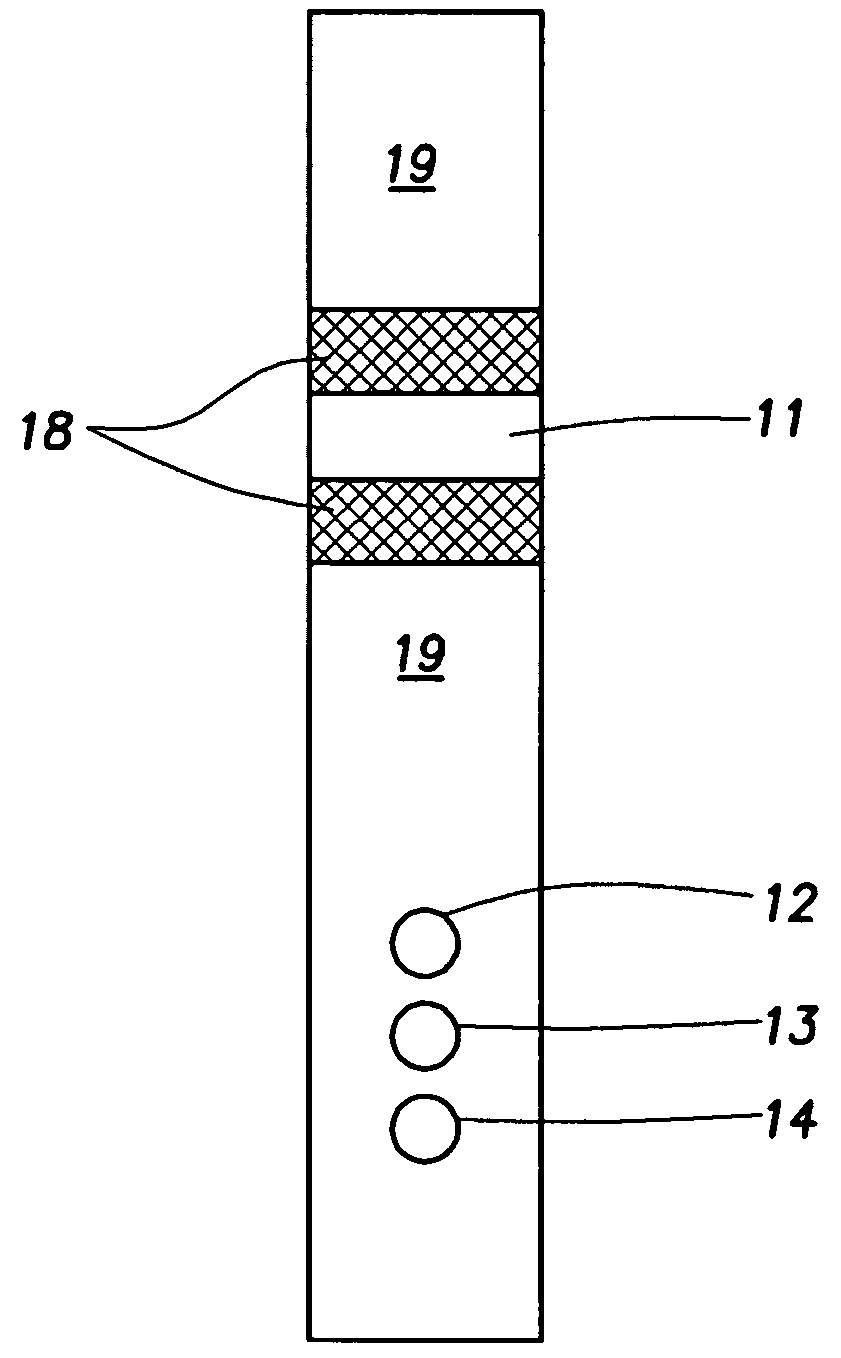Apparatus and methods for imaging wells drilled with oil-based muds
a technology of resistivity measurement and equipment, which is applied in the field of resistivity logging tools, can solve the problems of limited well coverage, inability to provide full borehole images, and inability to drill economically,
- Summary
- Abstract
- Description
- Claims
- Application Information
AI Technical Summary
Benefits of technology
Problems solved by technology
Method used
Image
Examples
Embodiment Construction
Embodiments of the invention relate to apparatus and methods for resistivity measurements and formation imaging. A tool in accordance with embodiments of the invention is capable of operating in oil-based muds (OBM) and may be used while drilling. In addition, embodiments of the invention can monitor and / or minimize the tool standoff effects.
A resistivity logging tool can be based on one of the two sensor mechanisms: electrical dipoles (using generally metallic electrodes) and magnetic dipoles (using generally induction coils or resonant cavities at VHF). Embodiments of the invention relate to tools using metallic electrode sensors.
Due to high resistivities of typical OBM (Rm>1000 ohm-meters), it is necessary to use current sources capable of high-operating frequencies. With high frequencies, it becomes possible to drive sufficient currents by capacitive coupling through the insulating muds and into rock formations, and to collect currents returning to the electrodes on the too...
PUM
 Login to View More
Login to View More Abstract
Description
Claims
Application Information
 Login to View More
Login to View More - R&D
- Intellectual Property
- Life Sciences
- Materials
- Tech Scout
- Unparalleled Data Quality
- Higher Quality Content
- 60% Fewer Hallucinations
Browse by: Latest US Patents, China's latest patents, Technical Efficacy Thesaurus, Application Domain, Technology Topic, Popular Technical Reports.
© 2025 PatSnap. All rights reserved.Legal|Privacy policy|Modern Slavery Act Transparency Statement|Sitemap|About US| Contact US: help@patsnap.com



